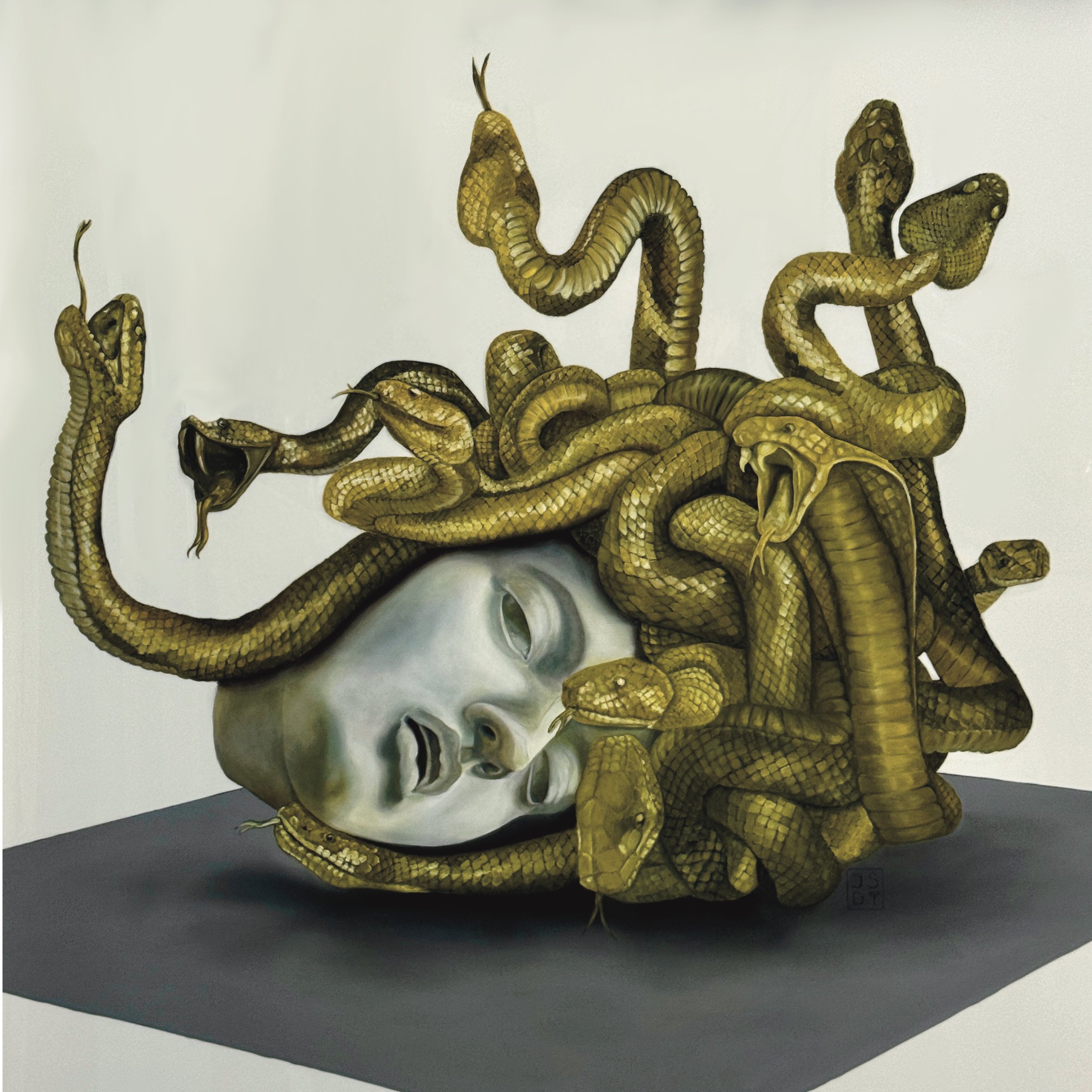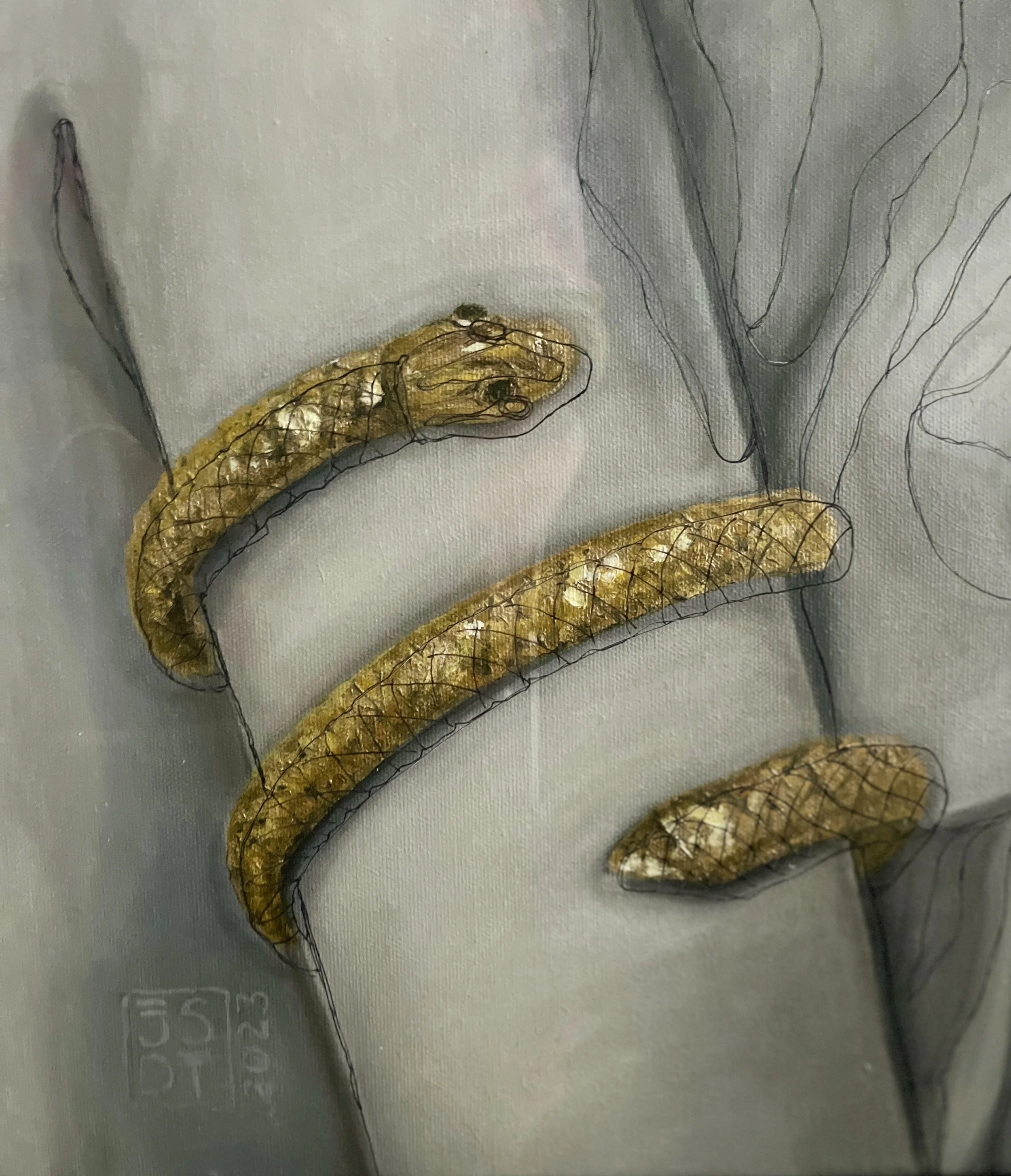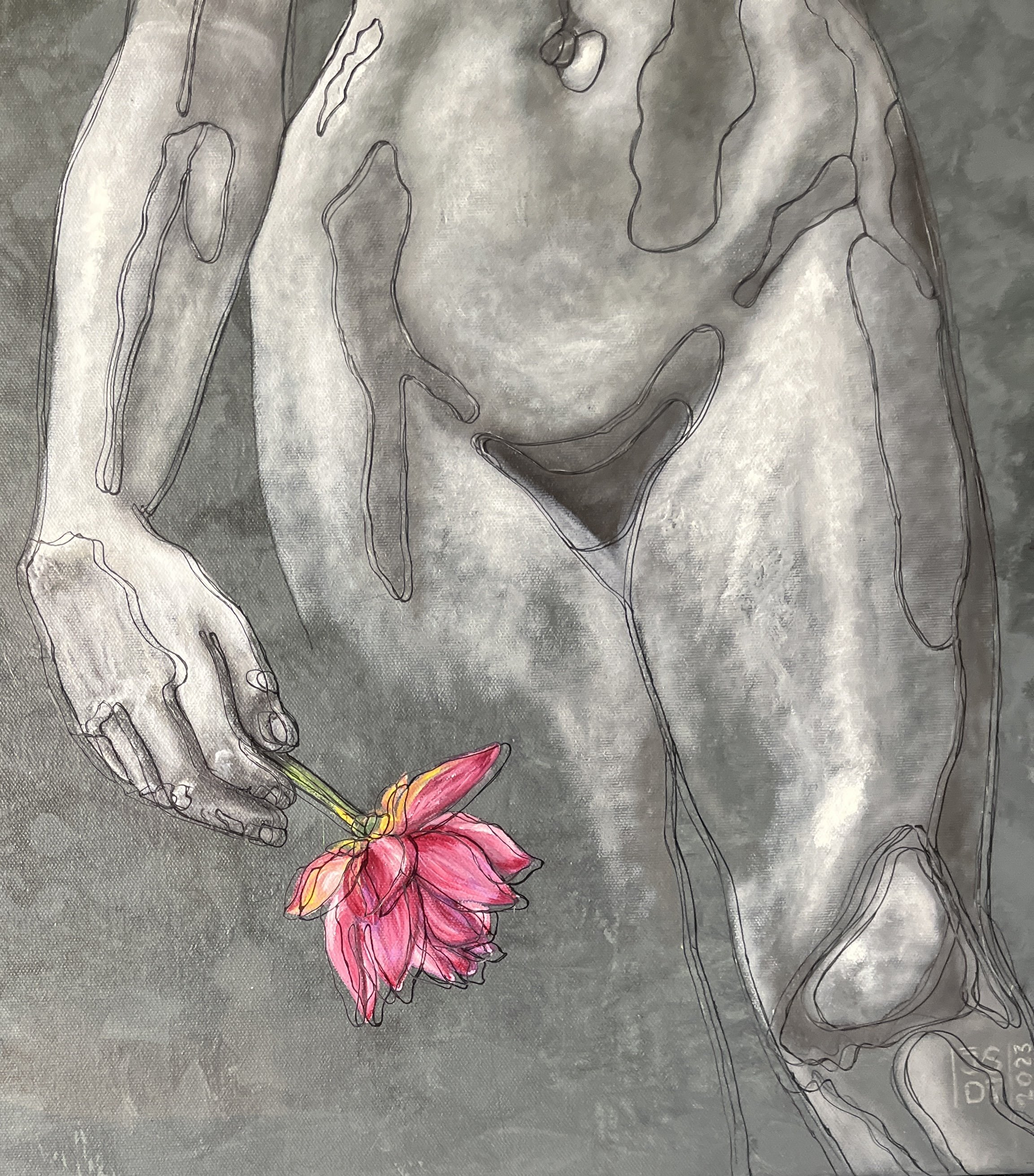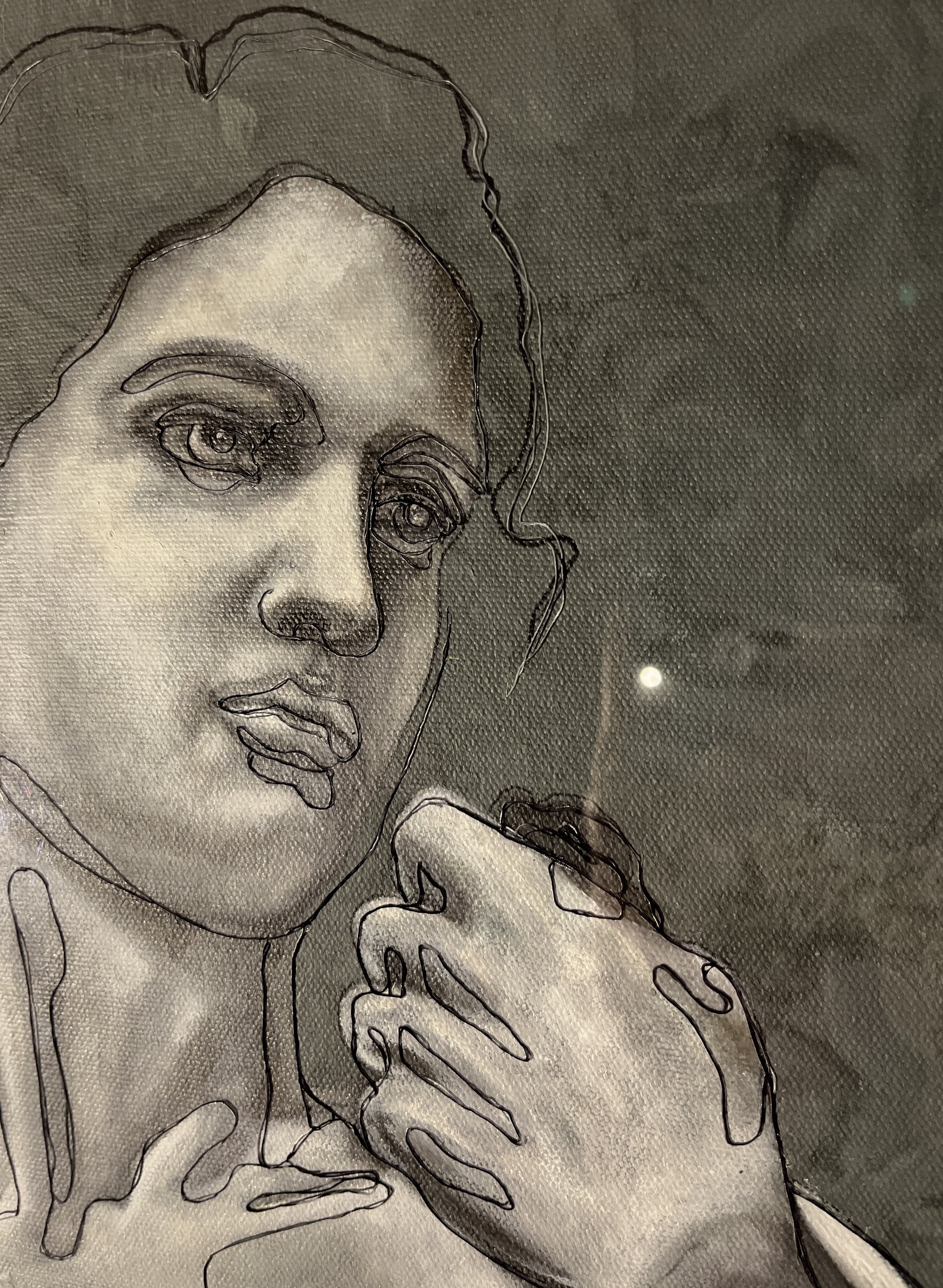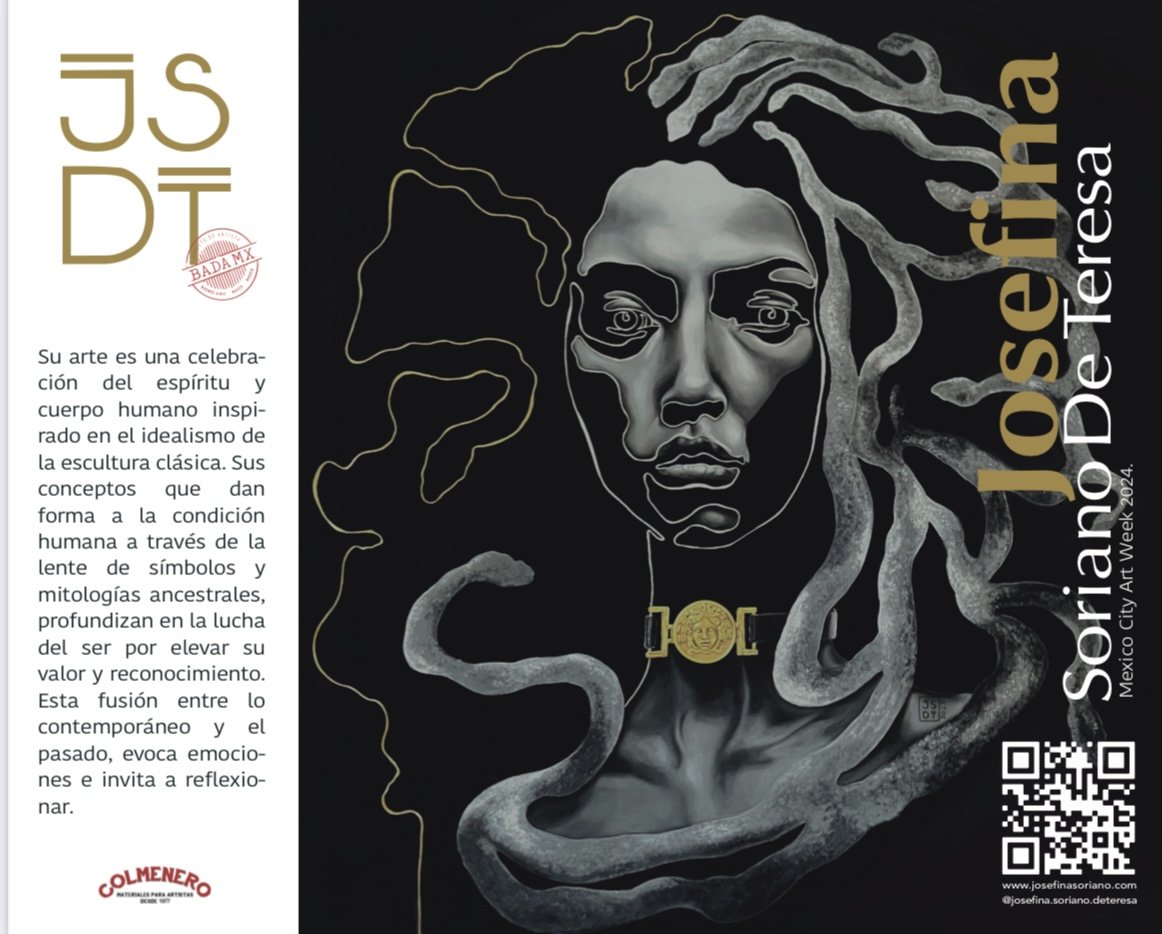Interview with Josefina Soriano de Teresa

Josefina Soriano de Teresa is an artist who effortlessly blends classical symbolism with contemporary narratives. Her work resonates with the timeless power of symbols and mythology, weaving tales that transcend eras. Ahead of her showcase at BADA during Mexico City's Art Week, Josefina shares insights into her art, exploring its emotional depth and layered storytelling.
Join us for an exclusive glimpse into her upcoming series, 'Feminine Archetypes: Questioning the Litany,' and discover the profound connections she aims to create through her art.
The Fusion of Timeless Symbols and Modern Narratives
Your work often integratesclassical with contemporary symbolism. Could you elaborate on how these juxtapositions serve your artistic vision and narrative?
JS: As an artist, I've always been captivated by the profound language of symbols, a timeless form of conveying powerful and complex ideas that spans back to prehistoric times. Ancient civilizations, including the Egyptians, Chinese, Mesopotamians, Persians, and notably the Greeks, have woven symbols into the fabric of their cultures. The allure of Greek mythology, in particular, resonates with me, as their tales, as seen in Hesiod's Theogony from around 700 BC, remain relevant in our modern era. The Greeks significantly shaped our cultural, traditional, artistic, and political landscapes, laying the foundation for contemporary thought and encouraging innovative problem-solving.
In essence, Theogony's narrative serves as a timeless reflection on the challenges humanity faces—inequality, violence, love, hate, power, jealousy—issues that persist today. While some ancient symbols have endured through time, others underwent transformation with the advent of Christianity. For instance, the symbolism of the snake was once associated with knowledge but was later reinterpreted as a representation of evil.
Embracing contemporary and ancient symbols in my work is a deliberate choice, as they can convey deeper meanings beyond the confines of language. These symbols add a layer of intrigue to my subjects, inviting my audience to decipher the intricate connections between past and present, providing a visual language that speaks volumes.
Mythology's Influence: Unveiling Emotional Depths
Could you share more about the role of mythology in your art and how it influences the emotional resonance and multiple layers of meaning in your work?
JS: Mythology is pivotal in my art, interlacing emotional resonance and multiple layers of meaning into my work. Take Venus (Aphrodite), a goddess symbolizing beauty, erotism, and desire. Traditionally, art has perpetuated the idea that women must conform to standards of beauty to be desired. However, I delve into the complexities of Venus's character, highlighting her experiences with violence from men and jealousy from women. Using symbols, I amplify her voice and provide alternative meanings to her image, transcending the superficial.
In my interpretation, Venus becomes more than a mere embodiment of beauty. Similarly, Medusa transforms beyond the stereotype of a turning-to-stone gorgon. The Titan Atlas, traditionally associated with bearing the weight of the world, now conveys a message of peace. Even the Three Graces take on new significance as advocates of the #freethenipple movement.
By infusing these mythological figures with alternative narratives and symbols, I strive to challenge preconceptions, offering viewers a nuanced perspective beyond the surface and fostering a deeper connection with my art's emotional and symbolic layers.
The Human Figure as Narrator: A Canvas of Stories
The use of the human figure seems pivotal in your artwork. How does your fascination with the human body contribute to the storytelling within your pieces?
JS: In my work, the human form plays a central role as it is a crucial element of my storytelling. Inspired by the Greeks, who revered the human body as divine and represented their gods in idealized forms, I draw inspiration from classical art's timeless beauty, proportion, and poise. Nevertheless, my approach involves a free divergence. Rather than idealizing, I seek to use the classical idea of "perfection" as a canvas for narrative exploration.
Like the Greeks who strived to immortalize the human form in stone and bronze, I harness this timeless aesthetic. However, my art goes beyond immortalization; I introduce alterations—whether in the form of modified hair, clothing, or the inclusion of symbols. These modifications serve as a means to either conform to or challenge social conventions, transmitting messages to those who engage with my art.
In essence, my work transforms classical perfection into a bearer of meaning, using the human body as a powerful medium to express narratives that align with or rebel against societal norms.
'Epifanía': Redefining Female Icons
Your ongoing series, "Epifanía," explores the magnificence of goddesses and female icons. Could you delve into the inspirations behind this series and what you aim to evoke in your audience through these representations?
JS: My ongoing series 'Epifanía' delves into the splendor of goddesses and female icons, aiming to evoke a revelation in the audience. In this collection, I explore the inspiration behind the artwork, mainly focusing on the eponymous piece titled 'Epifania.' This artwork captures the moment of revelation experienced by every woman—a realization of her inherent worth.
Epifania, portrayed as a bacchante, challenges historical labels, particularly the femme fatale archetype. She symbolizes a woman unapologetic about her sexuality, a non-conformist willing to fight for her beliefs. Notably, she adorns a snake instead of a halo, a deliberate choice rooted in ancient symbolism. The snake, representing wisdom, strength, courage, intuition, and healing in ancient cultures, has been reinterpreted negatively in Christianity.
Through 'Epifanía,' I encourage women to reclaim their worth, challenging societal perceptions and advocating for a renewed understanding of female strength and wisdom.
Unveiling 'Feminine Archetypes' at BADA
As you exhibit your work at BADA from February 8th to the 11th, marking your first show of the year, what can visitors anticipate encountering during this art fair?
Please provide insight into the pieces you'll be showcasing
I will debut my latest artwork at BADA from February 8th to 11th, 2024, in Mexico City, marking my inaugural show of the year. Visitors can expect an immersive experience with my latest series, 'Feminine Archetypes: Questioning the Litany.' Comprising 18 pieces in varying sizes, this collection introduces a new technique involving @plexiglas acrylic sheets.
Some pieces serve as a second skin to an oil-on-canvas image, with the plexiglas etched and tinted from within, creating a mirror/reflection effect that establishes a unique emotional connection to the work.
I intend to prompt self-examination and recognition as the viewer sees themselves within the artwork, sparking contemplation about personal identity. The series synthesizes images, leaving parts 'uncolored' and utilizing expressive lines to enhance visual impact. Additionally, the collection features numbered gicleé reproductions that are also available for purchase online.
As an exclusive reveal, I'm pleased to announce a 10% discount for the first 5 buyers, whether online or in person, following the fair's inauguration. I'm excited to share this series and create meaningful connections through art at BADA.
BADA Art Fair: A Catalyst for Artistic Dialogue
The BADA art fair during the Art Week in CDMX provides a platform for artists to showcase their work amidst a vibrant art scene. How do you perceive the role of such events in fostering dialogue between artists and the public, especially in a city known for its rich artistic heritage?
What particularly drew me to BADA is the proximity and direct interaction with the public and fellow artists; this provides a unique opportunity for dialogue with the public, which enriches any artistic practice. Engaging with the public allows me to gauge their perception of my art and understand how they connect with it. In a city like Mexico City, steeped in cultural and artistic history since pre-Hispanic times and recognized as a mecca for art in Latin America, participating in this event offers a valuable perspective on my place in the broader art world. I am excited to discover how my work resonates within a culturally vibrant context. Last, I'd like to thank Colmenero, my official art materials sponsor, for supporting my journey while preparing for the fair.


